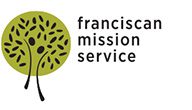Mission Monday: A Helpful Guide on How to Get Lost in a New City

In today’s post, missioner Valerie Ellis proposes a satirical guide to urban navigation. Although new missioner Valerie Ellis was having an awfully hard time adjusting to the new city in January, she is happy to report that she only occasionally gets lost in the Cancha, and might not be the best guide anymore for getting lost in Cochabamba.
Now that I have lived in Cochabamba, Bolivia for awhile, I would like to share this helpful guide with you before I master the city and forget everything I have learned.
1. Do not look at a map before you leave. This is one of the most surefire ways to ensure that you will be able to get lost with ease.
3. Don’t look at a watch or cell phone because you are so paranoid from the horror stories that you have heard about people getting (non-violently) mugged, and you do not want to end up in the same predicament.
4. Walk as quickly as you can in the wrong direction because you do not want to appear like a tourist.
 |
| View of Cochabamba by Valerie Ellis |
5. Ask five people in broken Spanish (or your language of choice) how to get to a place that they have never heard of, and for which you do not know the address. Have one of them tell you, “No entiendo nada,” which could either mean, “I don’t understand you at all”, or “I don’t understand because I have never heard of the place that you need to go.”
6. Against your better judgment, ask a security guard from a reputable business how to find your way. When you finally locate your destination, burst into tears at the first person you recognize. After all, you spent all this time feeling like an idiot, and you would not want to let that feeling go!
7. Since you are such a big fan of the movie Groundhog Day, start all over in the same predicament the next day.
8. Be overly confident, because when you left your destination the day before, you paid attention to the street signs so you would know where you were going.
9. Realize that when you were looking at the street signs the day before, the sign you took note of was actually telling you how to get to the following street. Take that street instead of the one where you needed to turn.
10. Call a local person you know. Make sure that you are really frustrated, and that the information you give is not at all helpful because, in reality, you still know nothing about your new city.
For you rebels who don’t like getting lost and actually like knowing where you are going, I will leave you with this happy ending (if you have enjoyed this instructional guide, here is your warning to stop reading): Your point of contact knows the city like the back of her hand, and she can talk you out of a cardboard box, or in my case, using local churches and businesses as landmarks.
When you get home, look at your map for the second time (because being someone who doesn’t like getting lost, you would have already reviewed it after your first day of being lost), and realize that the streets actually intersect and/or turn into each other and that your confusion stemmed from not being an “idiota” (or whatever the equivalent is in your country’s language of choice), but from being in a slightly wrong location on the correct streets.
Also for you “glass half full” types, I will leave you with this reassuring song so you can remember why you are in your new location in the first place:
Tagged in:
